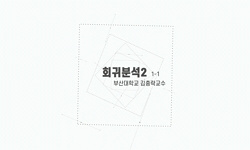<P><B>Abstract</B></P> <P>In the present study, rotary ultrasonic machining (RUM) was adopted to perform drilling of carbon fiber reinforced plastics (CFRP) in a cryogenic environment. An L27 orthogonal array was selecte...
http://chineseinput.net/에서 pinyin(병음)방식으로 중국어를 변환할 수 있습니다.
변환된 중국어를 복사하여 사용하시면 됩니다.
- 中文 을 입력하시려면 zhongwen을 입력하시고 space를누르시면됩니다.
- 北京 을 입력하시려면 beijing을 입력하시고 space를 누르시면 됩니다.
https://www.riss.kr/link?id=A107430787
- 저자
- 발행기관
- 학술지명
- 권호사항
-
발행연도
2017
-
작성언어
-
- 주제어
-
등재정보
SCI,SCIE,SCOPUS
-
자료형태
학술저널
-
수록면
984-993(10쪽)
- 제공처
-
0
상세조회 -
0
다운로드
부가정보
다국어 초록 (Multilingual Abstract)
<P><B>Abstract</B></P> <P>In the present study, rotary ultrasonic machining (RUM) was adopted to perform drilling of carbon fiber reinforced plastics (CFRP) in a cryogenic environment. An L27 orthogonal array was selected to conduct experiments by varying the spindle speed (denoted as N), feed rate (denoted as f), and ultrasonic power (denoted as P). The thrust force (denoted as Fz), exit burr area, and surface roughness (denoted as Ra) were measured to evaluate the machining performance. The influence of process parameters and the regression model were derived for each output quality response. Additionally, multi-objective optimization was performed using desirability analysis, and the predicted levels were used for confirmation. The results indicated that the feed rate (f) contributed more to the thrust force (Fz) by 45.85% and a maximum thrust force was recorded at 0.1 mm/rev. A decrease in spindle speed (N) was associated with an increase in feed rate (f) and ultrasonic power (P), and it resulted in minimum exit burr area. The influence of ultrasonic power (P) was highly significant in reducing burrs with a contribution of 52.45%. Conversely, the surface roughness (Ra) of the drill holes decreased at 3000 rpm, and this was attributed to the brittle fracture of the fibers at a lower temperature. Both N (30.88%) and f (30.83%) had an equal influence on producing a better surface finish in the drill holes. Furthermore, the predicted optimal settings were used to validate the results and were found to be within 95% confidence and prediction interval. Finally, the microscopic images of tool wear, burr formation, and drill hole surface morphology were analyzed and examined.</P> <P><B>Highlights</B></P> <P> <UL> <LI> Prediction of regression model for RUM of CFRP in a cryogenic environment. </LI> <LI> Output responses such as thrust force, burr area and roughness are investigated. </LI> <LI> The adequacy of an ANOVA model is checked for each output response. </LI> <LI> Optimization is performed by desirability analysis and the results are validated. </LI> <LI> Tool wear, burr formation, and drill hole surface morphology are analyzed. </LI> </UL> </P> <P><B>Graphical abstract</B></P> <P>[DISPLAY OMISSION]</P>
동일학술지(권/호) 다른 논문
-
- ELSEVIER SCIENCE
- Joo, S.-H.
- 2017
- SCI,SCIE,SCOPUS







 ScienceON
ScienceON






